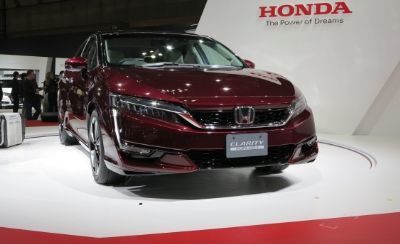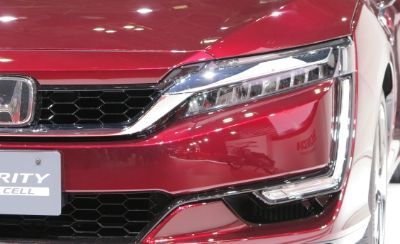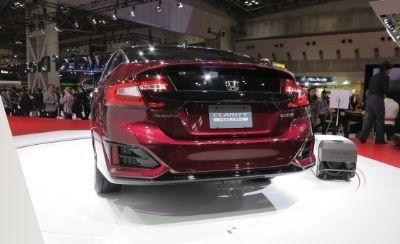At each new hydrogen fuel-cell car introduction comes the assertion from the proud maker that its car is no longer a science experiment. The 2017 Honda Clarity fuel cell finally gives credence to that platitude. It actually realizes the potential that hydrogen fuel-cell engineers have long worked toward: to make the fuel-cell hardware entirely invisible from the driving experience. Built on a dedicated platform that also will spawn a battery-electric version and a plug-in hybrid later this year, the fuel-cell Clarity drives just like a battery-powered electric car. Nearly all of the deal-breakers that have branded previous efforts as science experiments—the strident vacuum-cleaner sounds, poor packaging, sluggish performance—have been purged.

Hit the start button and there’s little to be heard from the driver’s seat. Press the accelerator moderately and the response is instantaneous and confidence inspiring—although the Clarity’s sprightliness fades somewhat above 60 mph or so. After all, the fuel-cell Clarity is an electric car; there are no dueling power sources sending torque to the wheels, just a single AC motor that delivers its peak 221 lb-ft right from the start. Step into it a little more and what you do hear, perhaps delayed by a second or two, is a turbulent whoosh of air from an electrically driven air compressor, force-feeding fresh air into this electric car’s onboard generator, the fuel-cell stack. The sounds lack any semblance of the whine made by the feline shriek of the Roots-type blower in the previous model, yet it supplies air at up to 70 percent greater pressure. It’s certainly a notch quieter than the Toyota Mirai, and ride quality isn’t bad either.


